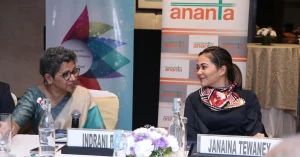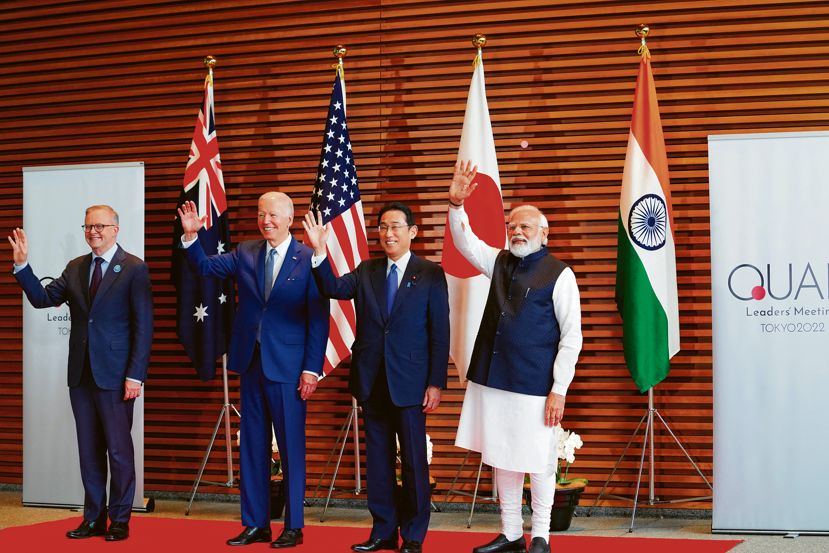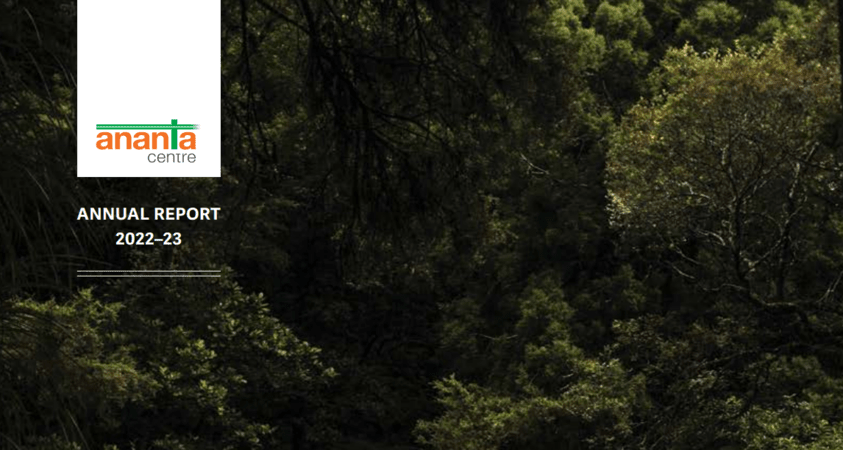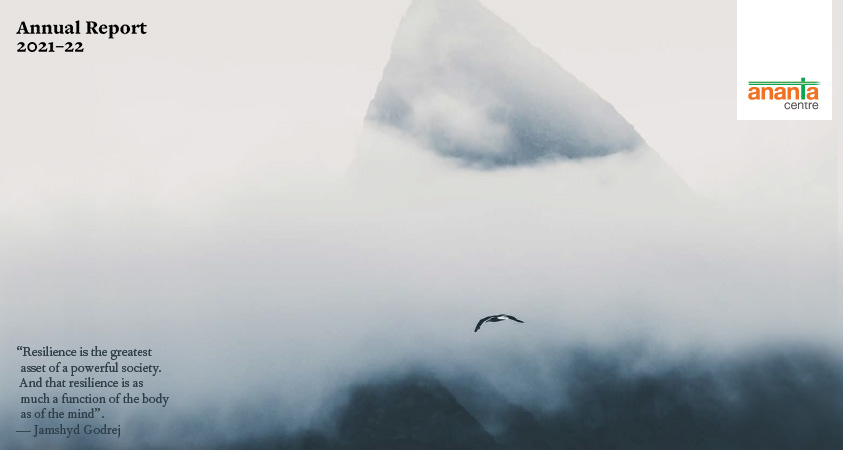FM outlines a nuanced economic policy approach
Statements of a country’s finance minister often say a lot about the state of the economy and its direction. In recent media interactions, Union finance minister, Nirmala Sitharaman, has made many an important observation on the government’s economic policy stance on key issues. On the question of the slow pace of privatisation and disinvestment, despite a buoyant capital market, Ms Sitharaman has explained that the government remains committed to its policy to ensure that the public sector is present only in core, strategic areas. Explaining further, she has said: “We are not delaying or doing nothing. The valuation of these (PSU) companies is being closely monitored and improved before we take them to the market”. Even about the government’s tariff policy, the finance minister has made a nuanced statement. High tariffs for some sectors are not a permanent stance of the government and policy calibrations are being made, she has said. “Artificial protection creating inefficiencies cannot be supported and we are conscious of that. And so, there are calibrations being done in this policy…We do want to give some protection for some time. It is not permanent…” On the question of higher tariffs and the removal of exemptions, the finance minister has clarified that the decision on Aatmanirbhar Bharat is regarding areas where the country could not afford to have cheap imports. “If our production is not cost-competitive, we will have to face the music”, she has said. On pushback from a few states on pension reforms, seen in the last few years, the finance minister remains hopeful that the official committee’s recommendations, based on its consultation with all stakeholders, should help resolve the issues. In the end, however, the states must not take a knee-jerk call on such matters as these would have serious implications for their as well as the Centre’s finances, she has warned. Indeed, the finance minister has outlined a new approach to reforms, where states will have to play a major role. In economic matters, the difference between the Centre and the states should not be political and reforms should be undertaken also at the level of the states and the third tier of governance or the Panchayat and urban local bodies. The four pillars for growth to be achieved in the coming years, according to Ms Sitharaman, are infrastructure, investment, innovation and inclusiveness.
Finmin report may influence RBI monetary policy stance
Barely ten days before the April monetary policy review is to be undertaken by the Reserve Bank of India (RBI), the Union finance ministry released its monthly economic report that exhibited optimism about a broad-based moderation in inflationary pressures on the back of an anticipated reduction in food prices in the wake of improved summer sowing of crops. Remember that retail inflation is yet to go below five per cent in at least seven of the last eight months. The government-mandated retail inflation target is 4 per cent. The ministry’s assessment is expected to be a significant input for members of the RBI’s Monetary Policy Committee, which would start its three-day long review on April 3 and announce its decision on April 5. Core inflation, which excludes volatile food and energy prices, was seen by the finance ministry as trending downwards, thereby indicating a “broad-based moderation in price pressures”, backed by strong domestic growth and benign global commodity prices. The report also observed that narrowing merchandise trade deficit along with rising net services exports should result in a narrowing of the current account deficit for the current year. It, however, noted that an increase in domestic household savings would be necessary to finance private-sector capital formation. Among the bright spots noted by the finance ministry were improving high-frequency indicators including burgeoning air-passenger traffic, sale of passenger vehicles, digital payments and improved consumer confidence, all of which indicated a strengthening of private consumption demand. The increased demand for residential properties in Tier-2 and Tier-3 cities augured well for construction activities and the latest Periodic Labour Force Survey showed a decline in the unemployment rate and an increase in labour force participation. In short, the outlook for 2024-25 was bright despite headwinds like hardening crude oil prices and global supply chain bottlenecks.
RBI report explains steep decline in net FDI inflows
An important data point pertaining to the external sector, made available in March, highlights a disturbing trend that need closer monitoring and supervision. In the first ten months of 2023-24, according to the Reserve Bank of India (RBI), India’s gross foreign direct investment (FDI) fell by 3.6 per cent to $59.5 billion. What was the performance in 2022-23? The RBI data reveal that gross FDI into India fell by 16 per cent to $71.4 billion in 2022-23. Remember that this was the first decline in gross FDI flows since 2013-14. In other words, this was also the first decline in gross FDI inflows during the Modi regime. And it appears that gross FDI inflows would decline for the second year running in 2023-24. But there is a bigger area of concern. India’s net FDI inflows have declined at a faster pace. In 2022-23, the inflows of net FDI declined by 27.5 per cent to $28 billion and in the April-January period of 2023-24, the pace of decline was faster at 38.4 per cent to $15.4 billion. The problem is that the net FDI inflows have declined not because of a rise in net outward FDI. Indeed, in line with an overall slower pace of global FDI flows, India’s outward FDI flows also fell by 20 per cent to $14 billion in 2022-23 and by 14 per cent to $10.1 billion in the first ten months of 2023-24. So, what contributed to the sharper fall in net FDI inflows, compared to gross FDI inflows? The culprit is total repatriation and disinvestment during this period. Repatriation and disinvestment (they happen when existing foreign investors either send more of their earnings back home or reduce their equity stake in their ventures in India) rose initially by a small margin of 2.4 per cent to $29.3 billion in 2022-23 and spurted by 36 per cent to $34 billion in the April-January period of 2023-24.
Surging outward remittances and NRI deposits
Even as India’s current account deficit narrowed to 1.2 per cent of gross domestic product in the third quarter of 2023-24, two interesting data points on India’s external sector were released by the Reserve Bank of India (RBI) in March. While deposits from non-resident Indians (NRI) have seen a big surge, resident Indians have also been remitting more money abroad. In the first ten months of 2023-24, NRI deposits under various schemes surged over 70 per cent to $10.1 billion, compared to $5.96 billion in the same period of 2022-23. The increase was largely fuelled by deposits in the Foreign Currency Non-Resident (FCNR) accounts. Outstanding NRI deposits at the end of January 2024 stood at $147.73 billion, up 8 per cent over $136.82 billion a year ago. Annual inflows of NRI deposits grew rapidly in 2022-23 to $8.9 billion, after a dip in 2021-22 at $3.2 billion. Resident Indians, on the other hand, increased their remittances abroad by 24 per cent to $27.42 billion in the April-January period of 2023-24. Such remittances took place under the Liberalized Remittance Scheme (LRS) allowing each Indian to remit up to $250,000 in a year. For the first ten months of 2023-24, the largest contributor to the increase was overseas travels, which went up by 31 per cent to $15 billion. Indians have also begun to remit money abroad for investment in equity and debt, estimated at $1.15 billion and the increase was 29 per cent. In 2022-23, total outward remittances were estimated at $27 billion, of which overseas travels accounted for $13.66 billion and equity or debt investments had a share of $1.2 billion. Other items under which resident Indians have been remitting money abroad include maintenance of close relatives, studies, gifts, deposits, purchase of immoveable property, medical treatment and donations. While the surge in NRI deposits could be attributed to the buoyant stock markets in India, attracting non-resident Indians to park their savings to give them more returns, the rise in outward remittances reflects a steady trend where resident Indians are travelling more, spending more on overseas education and even investing more in stocks of foreign companies. A part of the increase in outward remittances could have also been triggered by the enforcement of new rules on credit card payments abroad that would impose from 2024-25 a 20 per cent tax deduction at source on all such payments above Rs 7 lakh during a financial year.
Contours of a new structure to hold festival of democracy
Two major electoral developments took place in March that will undoubtedly have an impact on the Indian economy. On March 14, the high-level committee on “One Nation One Election”, headed by former President, Ram Nath Kovind, submitted its report to the current President, Droupadi Murmu. The roadmap outlined by the Kovind Committee was to synchronize elections in the country in two stages. In the first stage, simultaneous polls were to be held for the Lok Sabha and the legislative assemblies of the states. This would require an amendment to the Constitution. Significantly, however, the Committee believed that states’ ratification, ordinarily required for Constitutional amendments, would not be needed. In the second stage, elections to the local bodies would be held within 100 days of the elections held for the Lok Sabha and legislative assemblies. The second stage of synchronization, however, would require both an amendment to the Constitution and its ratification by at least 50 per cent of the stages. What will be the process through which these changes should be implemented? The Committee suggested that the President, after the amendment to the Constitution, will notify an “appointed date”, which will be the date of the first sitting of the Lok Sabha after general elections. Assemblies, for which elections would have to be held after this date, would have a tenure only till the next Lok Sabha elections. This will facilitate simultaneous Lok Sabha and assembly elections. And if there is a hung house or the ruling party loses a trust vote in the middle of the five-year tenure, elections will be held only for the remaining period of the five-year term. All these recommendations will obviously be contested politically. But once implemented, these will usher in a new electoral system, with many economic gains as fewer disruptions to decision-taking process will take place. The Committee has also noted how India’s economic gains will result in higher gross domestic product for the country. The submission of the Kovind Committee’s report took place on the same day when the government decided to appoint two election commissioners – retired IAS officers Gyanesh Kumar and Sukhbir Sandhu, and thereby filled the two vacancies caused by the completion of the tenure of Anup Chandra Pandey in February and the sudden resignation of the other election commissioner, Arun Goel on March 8. Three days later, the Election Commission of India announced the poll schedule for the 2024 general elections for the Lok Sabha and elections for legislative assemblies of four states – Odisha, Andhra Pradesh, Sikkim and Arunachal Pradesh. These elections would be held in seven phases from April 19 to June 1. The results would be declared on June 4, after 968 million eligible voters would have cast their votes across 1.05 million polling stations, using 5.5 million electronic voting machines, to elect 543 members for the Lok Sabha. India’s quinquennial festival of democracy is all set to begin from April.
Electoral Bond data reveal top donors to political parties
The details of donations made to political parties through electoral bonds, which were declared unconstitutional by the Supreme Court in February 2024, have been made public by the Election Commission of India in compliance of the apex court’s order. After the State Bank of India tried to delay submitting these details and the Supreme Court ticked off the country’s largest state-controlled bank, the details available on the website of the Election Commission show that Rs 5,830 crore or almost 50 per cent of the total electoral bonds worth Rs 12,156 crore issued between 2019 and 2024 were purchased by top 20 donors. These donors included some of the top names in Indian industry (with the value of the bonds purchased by them in brackets): Future Gaming Hotel Services (Rs 1,368 crore), Megha Engineering and Infrastructure (Rs 966 crore), Qwik Supply Chain (Rs 410 crore), Haldia Energy (Rs 377 crore), Vedanta (Rs 376 crore), Essel Mining and Industries (Rs 225 crore), Western UPO Power Transmission (Rs 220 crore), Bharti Airtel (Rs 198 crore), Keventer Food Park Infra (Rs 195 crore), MKJ Enterprises (Rs 192 crore), Madan Lal (Rs 186 crore), Yashoda Super Specialty Hospital (Rs 162 crore), Utkal Alumina International (Rs 145 crore), DLF Commercial Developers (Rs 130 crore), Jindal Steel and Power (Rs 123 crore), BG Shirke Construction Technology (Rs 119 crore), Dhariwal Infrastructure (Rs 115 crore), Avees Trading Finance (Rs 113 crore), Torrent Power (Rs 107 crore) and Birla Carbon India (Rs 105 crore). As expected, the Bharatiya Janata Party redeemed the largest number of bonds at Rs 6,060 crore, followed by the Trinamool Congress of West Bengal at Rs 1,609 crore, the Indian National Congress at Rs 1,422 crore, Bharat Rashtra Samithi of Telangana at Rs 1,215 crore and Biju Janata Dal of Odisha at Rs 775 crore. The idea of electoral bonds was mooted by the BJP government at the Centre and was launched in 2018. The bonds became controversial as the identity of the donors was kept confidential and many restrictions disallowing companies to donate money to political parties were removed. With the Supreme Court declaring the scheme illegal and the details of the bond purchasers and beneficiary political parties becoming public, it remains to be seen how these will impact the electoral choice of voters in the upcoming general elections. Once the connection between the bond purchasers and the political parties redeeming those bonds is established, electoral politics could become more complicated in the days to come.
New electric vehicles policy unveiled with mixed response
The Union government has unveiled a new policy aimed at encouraging foreign companies to invest in India to create domestic capacity for manufacturing electric vehicles (EV). There are, however, many conditions attached to the policy and its implementation may raise many problematic situations. It proposes to reduce the customs duty on imports of electric vehicles with a value of over $35,000 per unit to 15 per cent. However, this concessional duty (the current import duty on electric vehicles is 70 to 100 per cent) will be available only for a period of five years from the date when the foreign company gets the approval for setting up its facility to manufacture such cars. A minimum investment of $500 million has been stipulated for such foreign companies in the first three years, with a commitment of raising the level of localization to 25 per cent by the end of three years and to 50 per cent by the end of five years. Only those foreign companies with a minimum global group revenue from automotive manufacturing of Rs 10,000 crore and a minimum global investment in fixed assets of Rs 3,000 crore will be eligible for this scheme. While companies like Tesla, Vinfast, Kia, Skoda, BMW and Mercedes-Benz will be encouraged to set up their plants in India, companies like BYD Auto of China may not be able to take advantage of the new policy. This is because the existing rules to subject all foreign investment from neighbouring countries (with a land border with India) to a specific clearance from the home ministry will be enforced under the EV policy as well. Domestic manufacturers of electric vehicles are not worried over the reduction in the customs duty because foreign investors under the policy cannot produce or import any electric vehicle that is priced lower than $35,000 per unit. There are enough safeguards against domestic EV makers and the damage, if any, would be minimal, according to the chairman of Maruti Suzuki, R.C. Bhargava. However, there will be concerns over the way the new EV policy will be implemented and monitored. Measuring the indigenization performance of each foreign player, monitoring their imports and the checks to be imposed on those manufacturers who fail to adhere to the localization norms would be a challenge.
India-EFTA pact links foreign investment with trade
In a breakthrough in early March, India entered into a free trade agreement with four countries under the European Free Trade Association or EFTA. These countries are Switzerland, Iceland, Norway and Liechtenstein. The negotiations ran for 16 years and were held over 21 formal rounds. As a result of the agreement, the four EFTA countries will get duty-free market access to India for products like Swiss watches and chocolate. An interesting feature of the agreement is that EFTA’s free access to the Indian market is subject to their increasing their investment in India by $50 billion in 10 years and by another $50 billion in the next five years, which are expected to create one million additional jobs in the country. If such investments do not fructify, India can partially withdraw the tariff concessions that are granted under the free trade agreement. Similarly, the investments will be linked to India achieving a nominal growth of around 9.5 per cent in dollar terms over these 15 years. In other words, the FDI commitment need not be met by EFTA if India fails to grow nominally by 9.5 per cent in dollar terms over 15 years. More significantly, both India and EFTA have kept most dairy and agricultural products on the sensitive list and there is no effective duty cut on gold imports. There is also no commitment by India on issues pertaining to Trade Related aspects of Intellectual Property Rights or TRIPS.
The previous issues of Indian Economy Review are available here: LINK
Supported by























